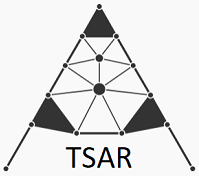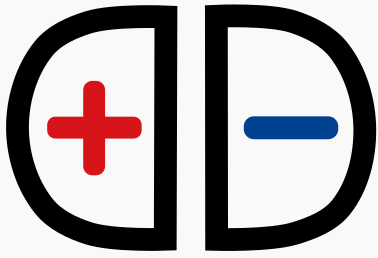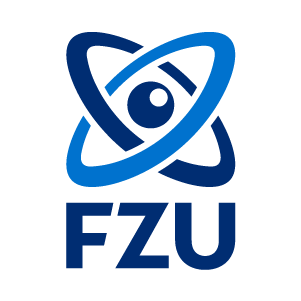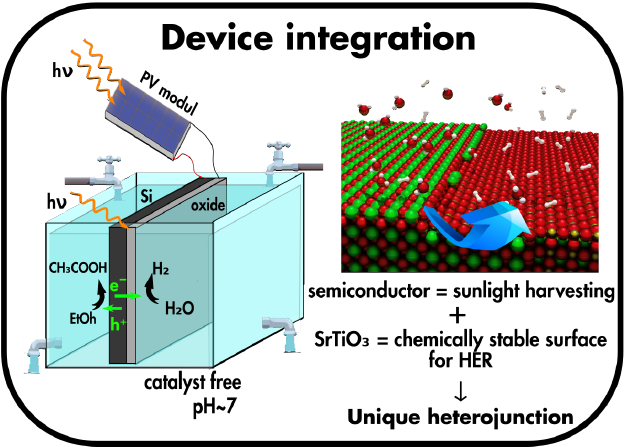- Project no. 101040057, EU-Horizon Europe, ERC-STG2D sandwiches, artificial layered building blocks for multifunctional materials (2D-sandwich)
 Project no. 964931, EU-Horizon2020, FET-OPENTopological solitons in antiferroelectrics (TSAR)
Project no. 964931, EU-Horizon2020, FET-OPENTopological solitons in antiferroelectrics (TSAR)- Project no. 101130758, EU-Horizon Europe, MSCADynamics of water next to solid-state surfaces and polymers (ATTIC)(show abstract)
Despite numerous studies of liquid water, its molecular structure has not yet been fully resolved and understanding of its specific properties remains limited. Recent experimental and theoretical studies have shown that interfacial water formed on surfaces of various synthetic materials tends to exhibit long-range order. Specifically, water exhibits unique physicochemical properties next to the super hydrophilic Nafion surface such as the exclusion of solutes and microspheres, higher refractive index and viscosity, absorption at 270 nm, and charge separation susceptible to incident electromagnetic energy. Ordered layers of water molecules have been also found next to biomolecules like proteins or DNA suggesting a dynamic interaction between matter and aqueous media based on hydrogen bonding or other electrostatic interactions. Simulation studies have also shown that water adjacent to graphene surfaces could build an extensive hydrogen bond network suggesting that water might be involved in the p–p interactions between aromatic groups. In the ATTIC project, the water layer built in the vicinity of various surfaces will be extensively investigated at a molecular level by employing dielectric, THZ and Raman spectroscopic techniques. The spectroscopic studies will be initially focused on Nafion and other hydrophilic surfaces and subsequently, the interactions of water with the aromatic groups of graphene will be explored. The last part of the project includes spectroscopic studies next to orthogonally synthesized styrene-based polymers that bear different functionalization to explore how alterations in the electronic density of aromatic groups affect the water dynamics and the overall self-assembly state of polymers in water. This project aims to bridge the gap between diverse experimental and theoretical works on unique water properties and to pave the way for the development of innovative water-based technologies.
(hide abstract) - Project no. 101107145, EU-Horizon Europe, MSCAHeterojunctions of Topological Insulator and Metal organic frameworks for THz detection applications (TI-MOF-TERA)(show abstract)
Today, x-ray detection techniques are widely used in the homeland security, such as airport surveillance and custom activities, and in the medical diagnostics. However, x-rays are ionizing, can provoke cancer like diseases and, moreover, they are unable to detect fabric, plastic and concealed hazardous materials. The terahertz (THz) technology has a potential to solve these problems; however, mainly due to the low photon energy of THz waves, it is still difficult to accomplish high-speed and sensitive room temperature THz detection. The proposed work aims to advance the THz detection technology by exploring exciting opto-electronic properties of topological insulators (TIs), metal organic frameworks (MOFs) and their interfaces. I will focus the research on the design and fabrication of heterojunctions consisting of TI thin films and semiconducting two-dimensional MOFs and on the optimization of their electronic properties and interaction strength with THz radiation. To address the enhancement of light-matter interaction in these novel devices I will vary the chemical composition of MOF layers, thus enabling the control of their crystalline order and of the coupling between organic and inorganic components. TIs surface properties will then enhance the charge carrier transport at the interface due to topological protection against the carrier scattering. These ingredients will allow tuning and optimization of the photocurrent generation upon absorption of THz photons, i.e. of the photodetection process. The project will answer questions of the physical mechanisms of charge carrier transport in MOFs and at TI-MOF interfaces and of the key parameters for an enhancement of optoelectronic properties in Ti-MOF heterojunctions.
(hide abstract) - EU-Horizon Europe » WIDERA Hop On FacilityPHOENIX Hop On FZU (PHOENIX HOPON FZU)
- Project no. 25-15518L of the Czech Science FoundationPerovskite-Films for ANti-ferroelectric DieLectrics (PFANDL)
- Project no. 25-18870L of the Czech Science FoundationFunctional Domain Walls in Multiferroic Materials - from symmetry to quantitative properties (FDWMM)
- Project no. 24-10699K of the Czech Science FoundationTailoring Relaxor Antiferroelectric Ceramics for Energy Storage (TRACES)
- Project no. 24-10247K of the Czech Science FoundationMulti-functional hybrid nanomaterials with controllable ferroic properties (MultiFerroHybrid)
- Project no. 23-42944L of the Czech Science Foundation - International Lead AgencyHolographic Blue Phase Photonic Crystals: from microlasers to all-optical switching (HOLOBLUE)
- Project no. 24-11275S of the Czech Science FoundationComputational design of high-performance ferroelectrics
- Project no. 24-10791S of the Czech Science FoundationTerahertz spin excitations and ultrafast phonomagnetism
- Project no. 24-10331S of the Czech Science FoundationControl over terahertz plasmons in graphene nanostructures
- Project no. 8I23001 of the Ministry of Education, Youth and Sports of Czech RepublicEpoch-making ferroic fluids based multi-functional materials (FerroFluid)(show abstract)
The target of our project is the development of epoch-making multi-functional materials based on ferroic fluids, such as nematic and/or columnar ferroelectrics, as well as their novel application as devices. The consortium consists of four teams, one from Japan and three from Visegrad countries. To maximize the synergetic effect in the collaborative research among these four teams, we set three ambitious and strategic subjects as the end-of project goals, according to each team’s field of expertise;
(1) Development of a new class of ferroic fluid materials;
(2) Design of hybrid, organic-based mutliferroic materials with atomic precision, based on the ferroic fluids;
(3) Application of these ferroic fluids for nano-devices, such as highperformance organic solar cells and/or high density memories.The project is substantially based on the strong international collaboration, interdisciplinary contribution, mentoring and transfer of knowledge on soft material sciences and related technologies. The main participating members are cutting-edge specialists in the soft matter field, experienced scholars and early-stage scientists, which are a perfect mix of energy and eagerness with expertise and experience. The Japanese team will be responsible for advanced measurements, simulation and application-related evaluation. The Polish team will coordinate integration of ferroic fluids into multiferroic materials and solar cell preparation, as well as advanced structural analysis. The Hungarian team will conduct dynamic measurements including rheology and photo-responses. The Czech team is in charge of the strategical molecular design and synthesis of new ferroic fluids and photosensitive molecules.
(hide abstract) - Project no. NSTC-24-12 of the Czech Academy of Science - Mobility Plus ProjectsSmart functional self-assembling materials for organic electronics and photonics (SMART-LC-CZ-TW)
- Project no. 23-05640S of the Czech Science FoundationElectron tunneling triggered by plasmon resonance in coupled nanostructures at terahertz frequencies
- Project no. 22-16499S of the Czech Science FoundationChirality as a tool for controlling photoresponsiveness of supramolecular arrangements
 Project no. 899285, EU-Horizon2020, FET-OPENA magneto-electric liquid – better sensing (MAGNELIQ)
Project no. 899285, EU-Horizon2020, FET-OPENA magneto-electric liquid – better sensing (MAGNELIQ)- Project no. 101028425, EU-Horizon Europe, MSCA3D architectures of Mxenes for Terahertz Applications (3D-AM-TERA)(show abstract)
The terahertz (THz) region of the electromagnetic spectrum finds application in different areas such as security, biological, drugs and explosions detection, imaging and astronomy. The state-of-the-art THz detectors lack high sensitivity, fast operation, and portability. The work proposed here seeks to develop my understanding of how 2D materials based MXene can upturn the THz radiation detection process. Such 2D materials are nanometer thick sheets; their interaction with the THz radiation can be strengthened when arranged into a 3D pattern. To address the conception of novel devices made of MXene sheets with enhanced light-matter interaction, I propose to develop 3D printing technology, which will populate the sample interaction area with specifically 3D arranged 2D sheets with complex percolation pathways where all the atoms will be exposed to the THz light. This will allow the maximum photon absorption in the entire photoactive assembly and thereby maximum photocurrent generation. The key questions will be addressed in this project: Q1: What are the quantitative differences in THz photoconductivity and photophysics of 3D structures and individual 2D building block? Q2: Does the device performance depend on some key intrinsic parameters of layered MXenes such as attached functional groups, layer thickness, doping and/or defects? Q3: How will the structuring of the 3D architecture influence the response of the device? Q4: Can 3D printing fill the THz gap and form into new generation of THz devices? This proposal lies at the frontiers of two leading research areas, 3D printing and THz spectroscopy of 2D MXenes. Mainly, the proposal is a combination of excellent science in developing advanced devices based on 3D printing of 2D materials with dedicated investigation on their ultrafast far-field and near-field THz spectroscopic properties.
(hide abstract) - Project no. LAS-21-02 of the Czech Academy of Science - Mobility ProjectsHigh frequency dielectric response of uniaxial relaxors and ferroic materials
- Project no. 21-20110K of the Czech Science Foundation - International Lead AgencySemiconductor - dielectric heterostructures for photoelectrochemical hydrogen evolution (SeDiHe)
- Project no. 21-11089S of the Czech Science FoundationTerahertz magneto-spectroscopy of superconducting films
- Project no. 21-06802S of the Czech Science FoundationMultiferroics induced by strain or by terahertz radiation
- Project no. 19-28594X of the Czech Science FoundationFerroelectric skyrmions
- EU COST Action CA17139European Topology Interdisciplinary Action
- MEYS 8J20PL008Design of functional photochromic self-assembling materials and smart composites for advanced photonic applications
- Project no. 20-05167Y of the Czech Science FoundationMagneto-electric properties of ferroelectric charged domain walls
- Project no. 20-01527S of the Czech Science FoundationInteractions among water molecules localized in crystals tending to their orientational ordering
- Project no. 20-20326L of the Czech Science Foundation - International Lead AgencyPolarization decorrelation regions in perovskite relaxors
- Project no. 20-01570S of the Czech Science FoundationImproved osseointegration of bone implants with the use of ferroelectric coatings
- Project no. LTC19051 of the Ministry of Education, Youth and Sports of Czech RepublicSelf-organised molecular materials and nanocomposites in restricted geometries(show abstract)
Within the project, new types of self-organized systems based on liquid crystals will be prepared and studied. Physical aspects of self-organization and stabilization of complex topological soft matter superstructures will be explored with respect to various conditions in the confined geometries.
(hide abstract) - Project no. 19-03564S of the Czech Science FoundationSmart supramolecular photochromic nanostructures
- Project no. 19-13525S of the Czech Science FoundationQuantum coherence in systems with correlated electrons: Superconductivity and magnetism in nano and bulk materials
- INTER-COST LTC19045 of the Ministry of Education, Youth and SportsCorrelation induced quantum fluctuations in low-dimensional superconducting structures
- Project no. 18-09265S of the Czech Science FoundationMagnetoelectric coupling and high-frequency properties of multiferroics
- Project no. 18-14497S of the Czech Science FoundationFunctional organic-inorganic self-assembling nanostructures
- Bilateral project no. AR-17-02 of the Czech Academy of SciencesStructure-thermal properties correlation of composite materials for energy application
- Project no. 17-11494J of the Czech Science FoundationMultiferroicity in skyrminonic materials
- Project no. PAN-17-04 of the Czech Academy of SciencesPhase transitions in nanocomposites, multiferroics, ionic conductors and liquid crystals
- Project no. 17-03662S of the Czech Science FoundationTerahertz conductivity in semiconductor nanostructures: fundamental aspects of charge transport and confinement(show abstract)
Understanding of the photoconductivity mechanisms in semiconductors on the nanoscopic level is a crucial prerequisite for the conception of novel optoelectronic and photovoltaic applications. Terahertz conductivity spectra provide information on the charge transport phenomena, which occur typically at this length scale, without the need of electrical contacts to be attached. In this project we will develop a concerted experimental and theoretical approach for microscopic description and proper understanding of ultrafast photoconductivity in nanoscale semiconductor systems. In optical pump – terahertz probe experiments we will emphasize an ultra-broadband spectroscopic aspect. In theory we will focus on the quantum description of the mechanisms of charge carrier localization in semiconductor nanostructures and on phenomena connected with the onset of the nonlinear transport regime including an appropriate effective medium theory description of the morphology of samples.
(hide abstract) - Project no. 17-04412S of the Czech Science FoundationCharge transport and phase transitions in cobalt oxides investigated by terahertz spectroscopy(show abstract)
Cobalt oxides comprise a wide group of materials in which important electron correlations lead to a large richness of interesting properties (e.g. large thermoelectric coefficient or superconductivity). The cobalt ions can frequently attain different electronic configurations, which is at the root of complex and often contradicting behaviors with varying temperature and material composition. Charge transport is one of the most important processes which reflect the internal state of these materials, and it is also of fundamental interest in potential applications. In cobaltites, we will study namely the mechanism of the metal-insulator transition. In layered cobaltates, we fill focus on the relation between charge transport and magnetic ordering. We will systematically study the conductivity in the terahertz spectral range, which permits a clear identification of charge transport mechanisms and charge confinement both in single crystals and in polycrystalline systems. Combination with common characterization methods will allow gaining a global picture of the behavior of the oxides.
(hide abstract)



